Psychonauts
Futuristic biker gangs, orange demons and evil talking skulls - what now from Tim Schafer? How about a summer camp full of hormonal psychic youngsters? Obviously!
| Version PS2, Xbox, PC | Developer Double Fine | Publisher Majesco (US) THQ (UK) | Genre Platform |
||||
Tim Schafer is SCUMM*. Well, to be more precise, Ron Gilbert is SCUMM, seeing as it's his baby. But still, there is no doubt that Schafer was one of the more visible driving forces behind the best of LucasArts adventure game golden era.
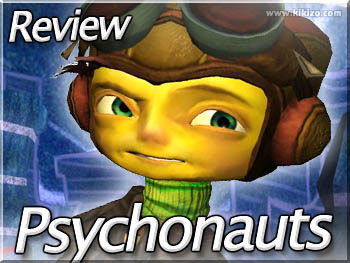
That is before LucasArts turned to the dark side and decided there was more profit in producing soulless Star Wars games, of course. However we're focusing on Schafer here because we're taking a look at Psychonauts, which is the new (indeed first) game from his devco Double Fine.
* For those not following so far, SCUMM (Script Creation Utility for Maniac Mansion) is the name of the game engine behind the LucasArts adventure games of the 80s/90s (Monkey Island, Day of the Tentacle, Sam & Max, etc.).
So what is Psychonauts? From a purely technical point of view it boils down to a simple platform game. Nothing that hasn't been seen many times before and is in fact quite derivative, albeit very solid and well developed. Indeed on the Xbox, that fact alone makes it the best of genre considering the competition consists of Blinx and Voodoo Vince, though on PS2 there are more quality platformers. As with any platform game there are a lot of items to collect, and this is the biggest problem with Psychonauts. There are so many different kinds of items to find and they're not too easy to locate in some instances.
There is no need to go into detail as to what all of the pickups are for, but listing what there is to find will go some way to showing how prominent they are. In the real world areas which mostly act as a level hub and place for story advancement there are arrowheads, psi-challenge markers, psi-cards, scavenger hunt items and, during the second half of the game, the brains of your fellow campers. The meat of the game takes place within the minds of other characters and in these, you'll be looking for bag-tags and the emotional baggage they match, mental cobwebs, memory vaults and figments... ah yes, the figments.
The figments are really the only problem with the collecting, the other items aren't too numerous or problematical to find, and to be fair finding all the figments isn't entirely necessary either, except for by completists. Just as well seeing as they are 2-dimensional, neon-coloured objects which vary in design from level to level. They are so numerous that you will easily pick up the majority of them during the course of a level anyway; the only real problem will be for those who do want to collect-'em-all, and if you're going to do that you're asking for the trouble anyway.
However, we don't want to be putting people off, so it has to be said that the collecting aspect only becomes tiresome once you're getting towards the end, and it was only even brought up to highlight that as this was the biggest problem with the gameplay, it isn't really a problem at all. Everything else is handled at least as competently as other beloved platformers. With the technicalities out of the way now though, we can move on to the real reason this game should be loved, which is the aesthetic.
That's right, this games style is far more important than its substance, a trend that appears to be gathering some momentum in recent times with titles like Viewtiful Joe and Killer7, and the forthcoming Okami. Could it be that videogames are finally entering a period of graphical fidelity mirroring post-Impressionist art movements? Let's hope this trend will continue on next-generation hardware.
The entire aesthetic of the game is noteworthy. Character and level design is incredibly varied, bright and colourful, yet still totally consistent throughout. The main real-world hub area of the Whispering Rock Psychic Summer Camp is nice enough consisting of lodge, wilderness and boat-dock areas much as you would expect them to be from seeing them in countless American films. It's when you dive into a characters mind though, that the real variety shows, as each level then reflects the persona of whose mind you enter. Everything from a Nippon-esque metropolis with you cast as Godzilla, to the opposite end of the scale with you cast as a playing piece on a tiny wargame board (complete with hexagonal pattern), with other levels playing around with Escherian geometry.
The characters themselves all have distinct designs, although as there are so many of them, only the main characters get enough exposure. Some of the bit-part characters are great, and it would have been nice to see more of them, but when the main players are this well developed you can't complain. Voice-over work is universally brilliant, much as it was with those old LucasArts games.
Main character Raz is perfectly voiced by Richard Horvitz (Invader Zim) with cameo roles for Star Trek alumni Armin Shimerman and Dwight Schultz, and a brief yet brilliant effort from the lovely Tara Strong as Sheegor (best known for Bubbles of Powerpuff Girls fame, but check out her IMDB profile to scare yourself silly). There is also a depth of character not often seen in games, which further enhances the whole Psychonauts concept. Needless to say, the animation, sound effects and background music are on par with the rest of the artistic design.
It's just as well then that the story and script back up the excellent characterisation and voice acting. Although it doesn't quite match up to the lofty heights of Sam & Max or Grim Fandango it is far beyond the majority of other console games, with elements of the kind of deep rooted mythology found in franchises such as Harry Potter and Star Wars, and only goes to show that videogaming can be used to deliver worthwhile stories. In fact, it is evident from this game that the Psychonauts concept and characters could easily translate into other mediums, as it is easily on par with similar comically dark cartoon such as The Powerpuff Girls and Spongebob Squarepants.
Indeed it might even be preferable that this is where the Psychonauts progress to next because, as much as this game deserves a sequel and its fans would want to see and play one, it would also be interesting to see exactly where else Tim Schafer and Double Fine can go next. Perhaps even, now that Steve Purcell has recently had the rights to Sam & Max returned to him, we could finally get another sequel that many people have been looking forward to.
If you own an Xbox (or perhaps even PC) this is a no-brainer; Psychonauts has no competition whatsoever and easily owns the platform genre on technical merit alone. On PS2 the competition is a lot tougher, but like Ico and Sands of Time it brings with it a level of design, both visual and aural, that is so far beyond the norm, which just elevates the whole to being more than just the sum of its parts.
| ||||||||||||
|






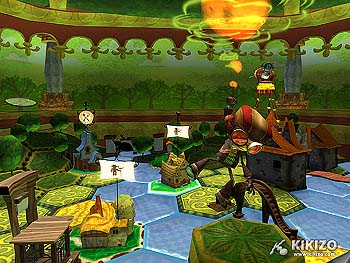




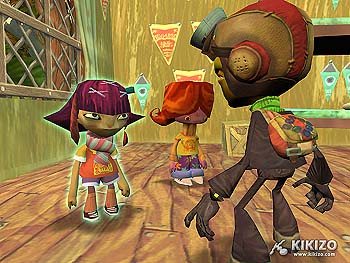





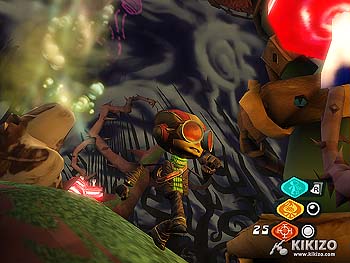




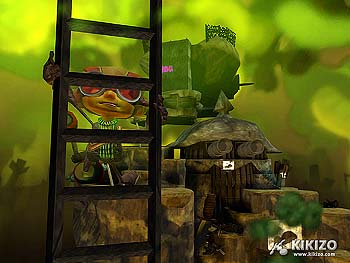








 Satoru Iwata Video Interview - the late Nintendo president spoke with Kikizo in 2004 as 'Nintendo Revolution' loomed.
Satoru Iwata Video Interview - the late Nintendo president spoke with Kikizo in 2004 as 'Nintendo Revolution' loomed. Kaz Hirai Video Interview - the first of Kikizo's interviews with the man who went on to become global head of Sony.
Kaz Hirai Video Interview - the first of Kikizo's interviews with the man who went on to become global head of Sony. Ed Fries Video Interview - one of Xbox's founders discusses an epic journey from Excel to Xbox.
Ed Fries Video Interview - one of Xbox's founders discusses an epic journey from Excel to Xbox. Yu Suzuki, the Kikizo Interview - we spend time with one of gaming's most revered creators.
Yu Suzuki, the Kikizo Interview - we spend time with one of gaming's most revered creators. Tetris - The Making of an Icon: Alexey Pajitnov and Henk Rogers reveal the fascinating story behind Tetris
Tetris - The Making of an Icon: Alexey Pajitnov and Henk Rogers reveal the fascinating story behind Tetris Rare founders, Chris and Tim Stamper - their only interview? Genuinely 'rare' sit down with founders of the legendary studio.
Rare founders, Chris and Tim Stamper - their only interview? Genuinely 'rare' sit down with founders of the legendary studio. The History of First-Person Shooters - a retrospective, from Maze War to Modern Warfare
The History of First-Person Shooters - a retrospective, from Maze War to Modern Warfare